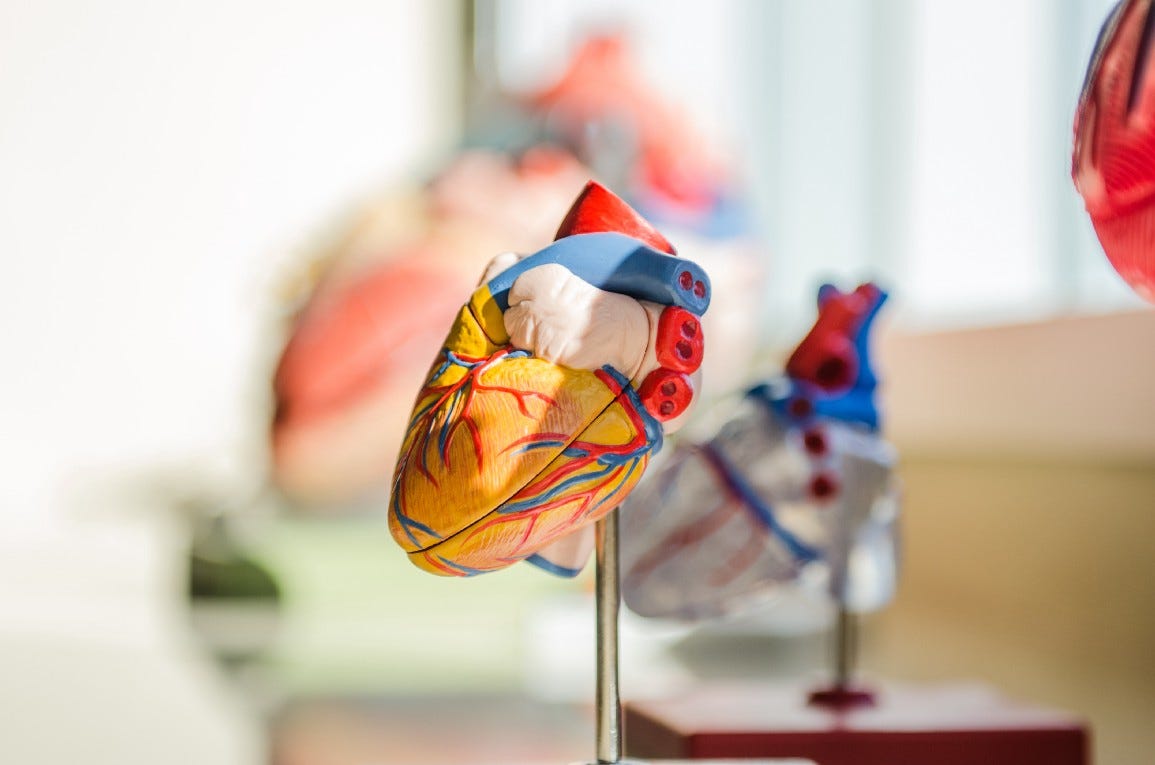Heart Failure, Water Retention And The Implications It Has On Our Body.
We’d need to consider the fluid dynamics occurring in the body.
One common drug that is prescribed for patients with heart failure is furosemide. It is a potent diuretic that is used to aid the elimination of excess fluids that are retained in the body (otherwise also known as water retention or edema), which is common in the case of these patients.
The question, of course, is why these patients do experience water retention in their bodies in the first place?
When a person experiences heart failure, we can conclude that their hearts have lost the efficiency to pump blood around their bodies. The pumping effect that our hearts generate is a peristaltic pumping action has been replicated in the design of mechanical pumps, which move fluid based on a pressure gradient — the higher the pressure gradient, the larger the flow rate of the fluid being processed by the pump.
While the pressure gradient on a mechanical pump can be regulated by flipping a switch to increase the power supplied to the pump, we can’t do that to our own hearts. When the heart muscle cannot generate the necessary pressure gradient to drive blood around the body, it is inevitable that there will be an accumulation (or backlog) of fluid within the body itself.
This fluid accumulation will become especially evident in the legs where a higher pressure gradient is needed to force the blood back upwards to the heart — and that’s where we see the water retention starting to appear.
Which is why we call it heart failure. The problem with the water retention in the body is that it is a clear sign that blood circulation within the body is impaired. When blood circulation is impaired, we can also be sure that oxygen transport within the body will also be impaired.
Oxygen transport impairment is an issue because the body’s immune system requires oxygen to do repairs on injuries within the body, for instance. When the heart isn’t pumping sufficient blood around the body, we’d realise that wound healing isn’t going to be as quick as it would be in a healthy human:
The Oddities Behind Wound Healing In Our Bodies
In this physical world filled with a ton of atrocious human clumsiness, just about anything is possible. We don’t have to look very far to find prizes such as the Darwin awards to celebrate human stupidity:
Therefore, we can see already that a person with heart failure is also going to have a weakened immune system.
What we do need to understand is that the peristaltic pumping action derived from the heart muscle is dependent on how efficiently the heart can contract and relax — we’ve got this continuous contraction/relaxation activity to move blood around the heart.
The heart muscle, like any other muscle in the body, contracts based on electrical impulses generated by calcium ions, while magnesium ions act as a counterbalance to the contraction impulses and hence relax the muscle.
When we’ve got the contraction/relaxation activity regulated properly, we’d be looking at a balanced state of dynamic equilibrium:
That’s one thing that we have to consider — our dietary intakes of calcium and magnesium have to be appropriately balanced to ensure that our heart muscles can contract/relax appropriately.
Another thing to consider is that ALL cells in the human body do undergo the tricarboxylic acid (TCA) cycle to generate energy via the transport of electrons down an electron transport chain:
The Biochemical Energy That Our Bodies Need, Explained.
It is a common sight to see people slumped over or being one with the floor at the end of an exhausting workout. The inertia becomes too much to overcome. It’s difficult to stay up straight. And then we decide that the horizontal position is the position that requires the least resistance, and we seek out that position.
It is further known that the transport of electrons is facilitated by this biochemical known as Coenzyme Q10:
What's The Deal With CoQ10 In Our Bodies?
A majority of the human population in today’s modern society is tired and overworked. I feel like that too sometimes - there are all these deadlines at work to meet, mortgages to pay, and the crises that comeseem to be neverending.
The funny thing is that a heart failure patient does not necessarily start out with heart failure. They start out with high blood cholesterol that leads on into heart disease and clogged arteries, of which statins are prescribed to block the synthesis of fresh cholesterol.
Unfortunately, the mechanism of action from these statin drugs is to block the synthesis of mevalonate, which ultimately also blocks the synthesis of fresh CoQ10 and leads to mitochondrial dysfunction:
Do Statins Really Cause Dementia?
Do statins really cause dementia? There have been many differing opinions about what they do. Some claim that it may help to protect one from dementia, while others claim that it may accelerate the onset of dementia.
So it looks like the prescription of statins will actually contribute towards the development of heart failure in due time.
Not to mention that one with heart failure will inevitably always feel lethargic with no sense of energy whatever to keep up with the things around them. Asking them to exercise would be an extremely tall order indeed.
Add to that the abundance of processed carbohydrate foods that are so readily available in first world countries, and we can see why heart disease is becoming such a big issue — these carbohydrates are great for business!
Then we get back to the prescription of furosemide for water retention when one has already harmed their hearts enough — furosemide, as a diuretic, is working to flush out excess fluid from one’s body, but at the same time, we also do have to consider all the soluble electrolytes that are contained within the water that is being urinated out.
If we were to be urinating quite a fair bit of dissolved magnesium and calcium ions, what’s going to happen to the dynamic equilibrium governing the peristaltic action in our heart muscles? Will that equilibrium be better or worse off?
I mean, we could actually do pump maintenance actions as a pre-emptive strike against the development of heart disease, but how many people even do know what to do in the first place?
Do feel free to check out 10 Nutrients That Support A Healthy Heart to see how our diet can influence heart health!
Also, do feel free to share this article and hit the “subscribe” button to get more updates about the science concepts in nutrition and health, all deconstructed nicely for your convenient perusal!









